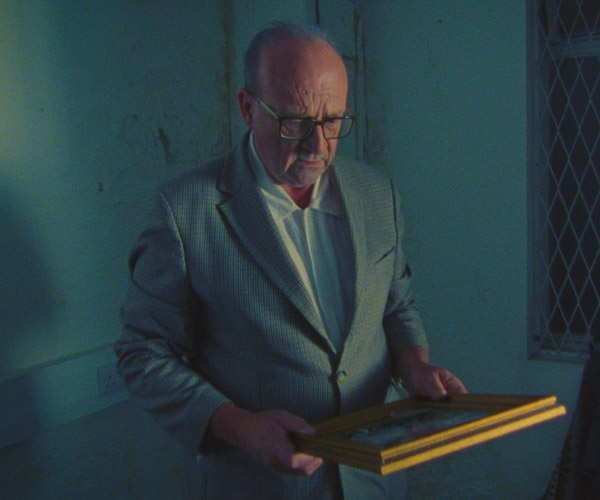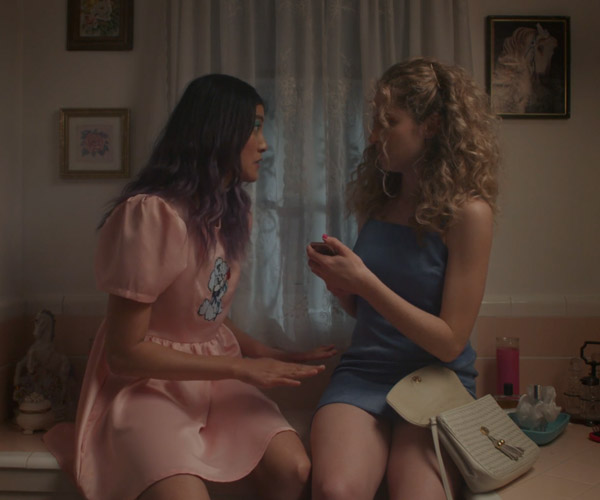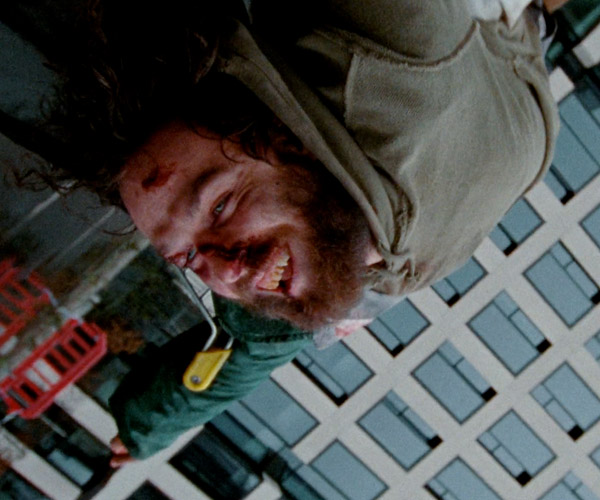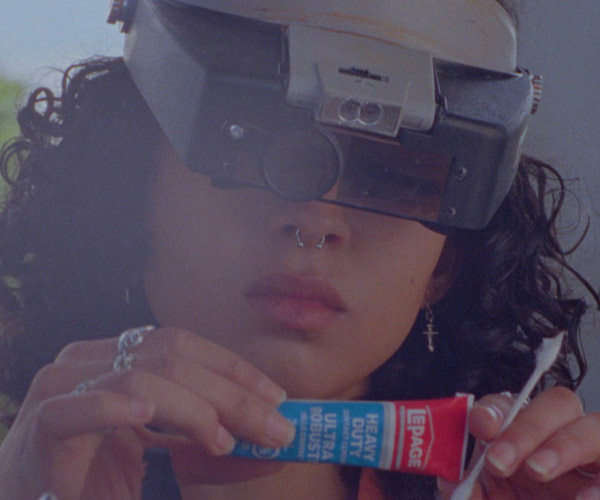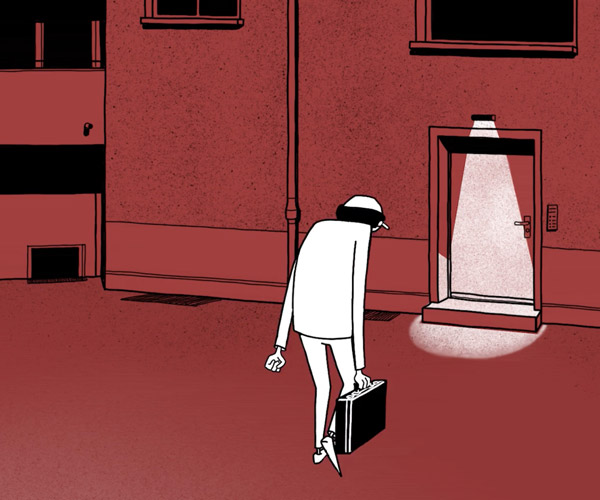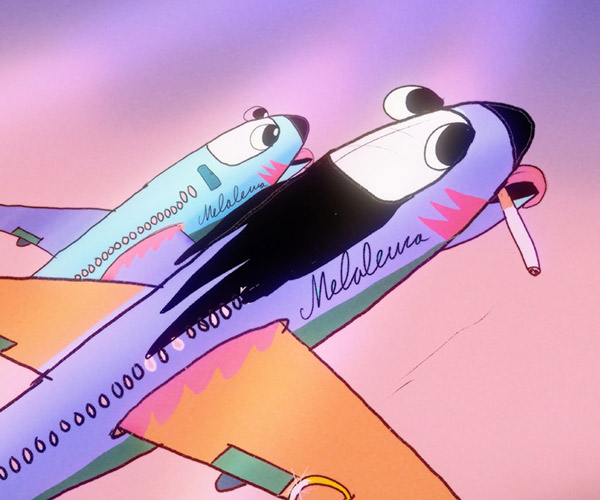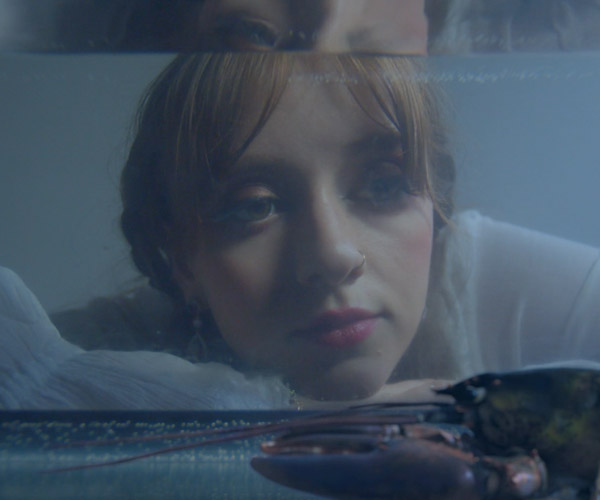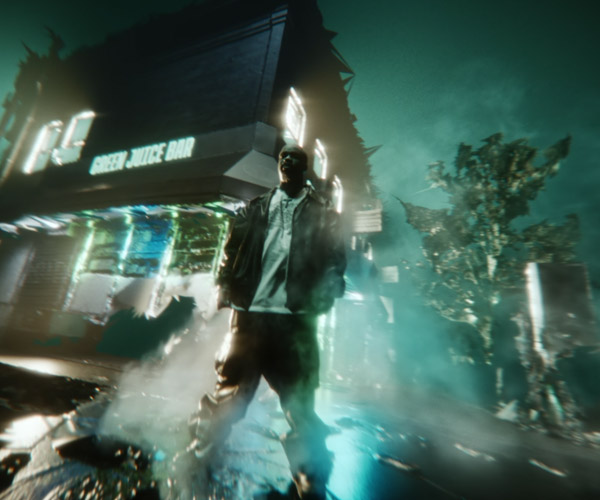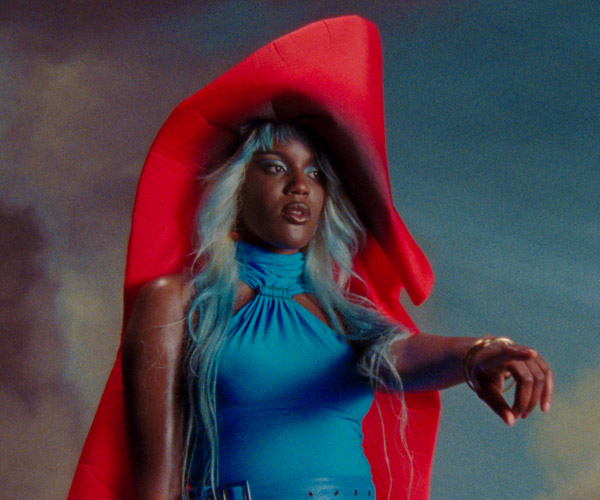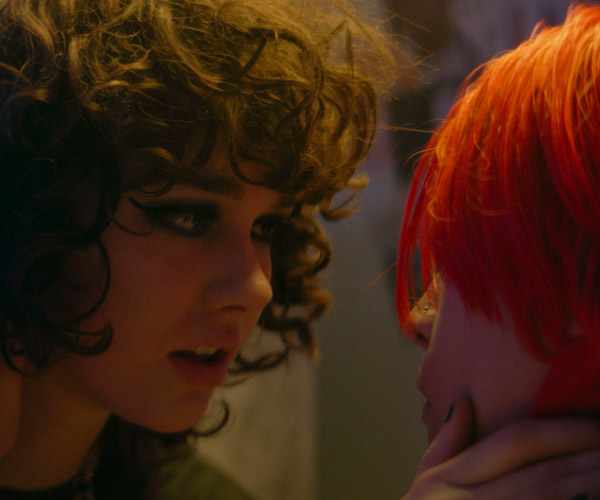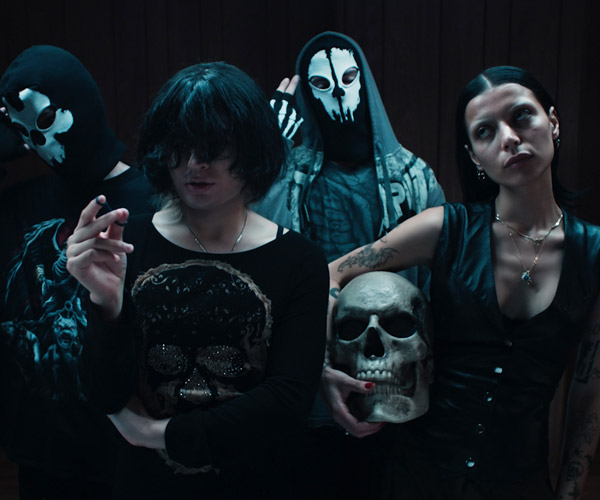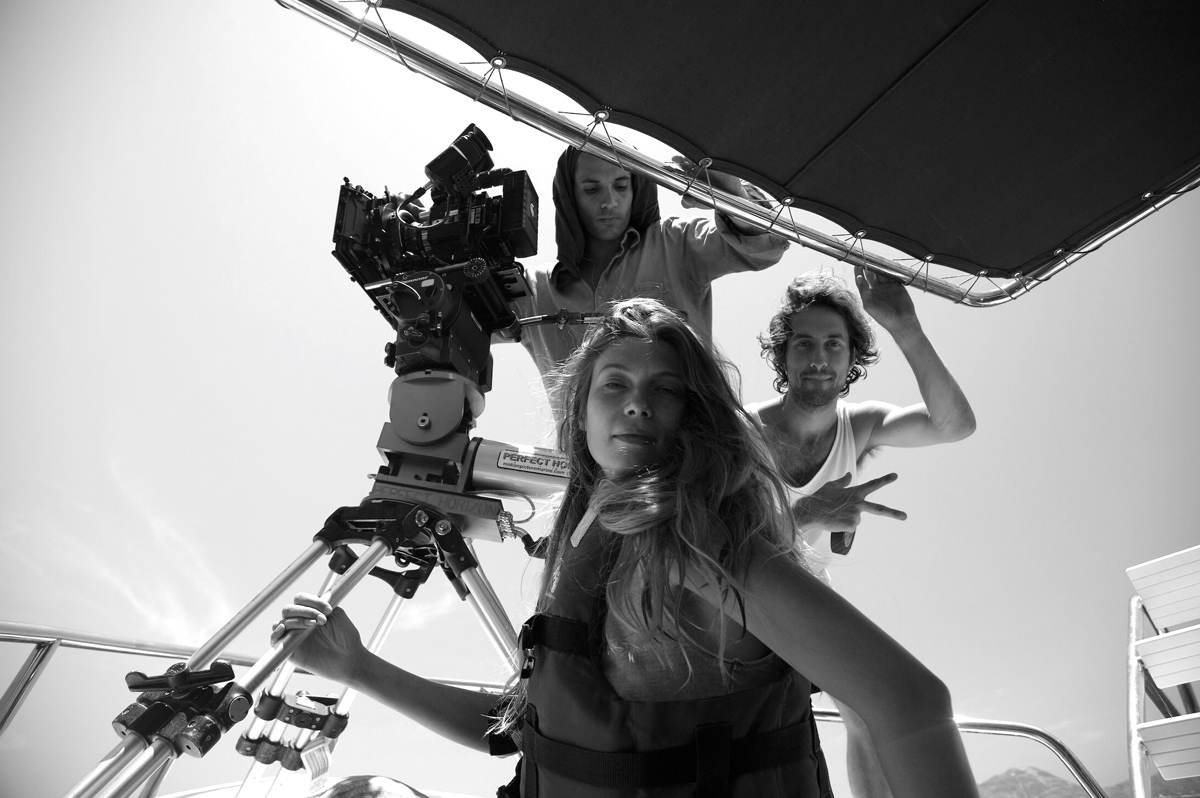
The directors’ cut of the video for “Obsession” by Joywave was our favourite music video of last year and designated as such in our 2019 Booooooom TV Awards! When the winners were announced at the start of the year we reached out to Laura Gorun, Cooper Roussel, and Dimitri Basil for an interview. Queue a global pandemic and Dimitri finding himself stuck in Colombia! Thankfully Dimitri is now back in the United States and, while slightly belated, their responses to our questions were well worth the wait! Check out the full interview below as the trio share their insights on filmmaking, current sources of inspiration, and how an imaginary Parisian producer named Antoine helped them get their start.
Jeff Hamada: I know Laura is originally from Romania, and Dimitri is from Colombia, Cooper, were you always based in LA? Maybe we can begin with how the three of you found each other?
Cooper Roussel: I’m originally from Buffalo, NY but escaped for LA as soon as I could.
Laura Gorun: I met Dimitri in Australia, we were both studying photography at the time. We soon realized we wanted to make the same kind of films, somewhere in between European New Wave, 70’s New Hollywood, and pulp sci-fi. We both wanted to make Hollywood films and we knew that if we wanted to move to LA we had to apply for an O1 visa — music videos seem like the fastest way to get established while learning… So we went on a full-time mission to make them.
When we started, Australia had minuscule budgets for music videos and it was also impossible to get a “yes” from anyone at a label. If you have no work, production companies won’t rep you, and if you don’t have a production company you don’t get work — just getting insurance for equipment can be a nightmare.
So we created this fictional production company and a fictional producer. His name was Antoine (from Paris) and for some reason, labels and agencies thought he was not only real but also the rep for all the big international talent in Australia. We even hired an actor to play Antoine at specific industry events etc.
At the peak, Antoine got emails requesting Gondry and Spike Jonze… Antoine will usually redirect those emails to their real reps but he would also add on the emails — “look if you can’t afford the bigger guys, I’ve got these two incredible directors…” and well, we started getting a lot of work via Antoine’s lies.
Cooper, we met when we moved to LA. Cooper has this charisma, the type where you feel like you’ve known him all your life, or you’ve seen him on a movie or sitcom… It’s a rare kind of charisma and what I believe makes you a great actor… So initially we saw Coop as an actor — but then we realized we all love the same films and directors, and well instead of two we were suddenly three, and it was seamless. As if we had always all worked together.
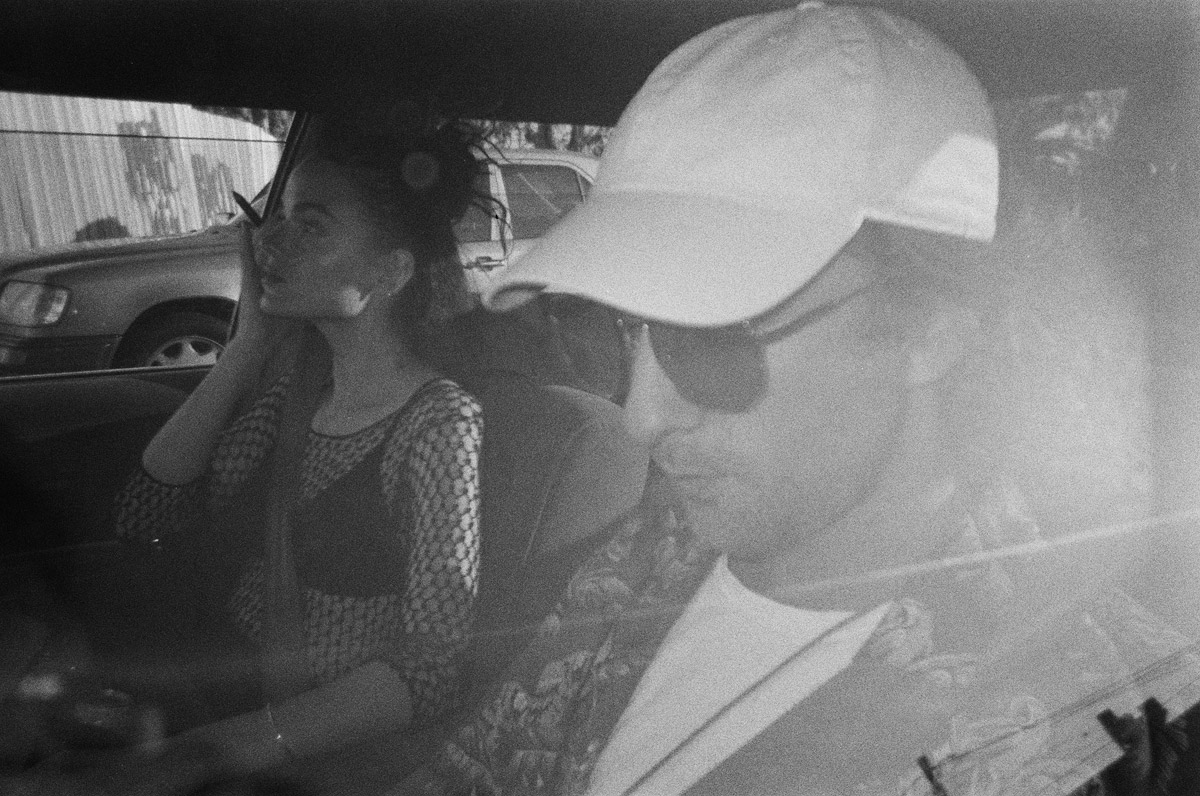
Behind the scenes of the Joywave “Obsession” video
Jeff Hamada: I know for you, Dimitri, your parents introduced you to a lot of art house films as a kid, are you all from creative families? Is filmmaking what you were born to do?
Cooper Roussel: Born is a lot of pressure so maybe I’ll go with boredom. My dad was a professor of Media Studies and encouraged me to watch films — so as a kid, I would have to spend 14 hour days cooped up in his office and would pass the time by raiding the VHS library. I would wait for the librarian Nancy to take her bathroom break and then just grab armfuls of tapes. At 8 years old I had no idea what the movies I was pulling out were, but I watched everything from “Eraserhead” to “Seven Samurai”, from “Deliverance” to “Total Recall”. Probably also why I was sent to the school office so much and slept with the light on into my 20s.
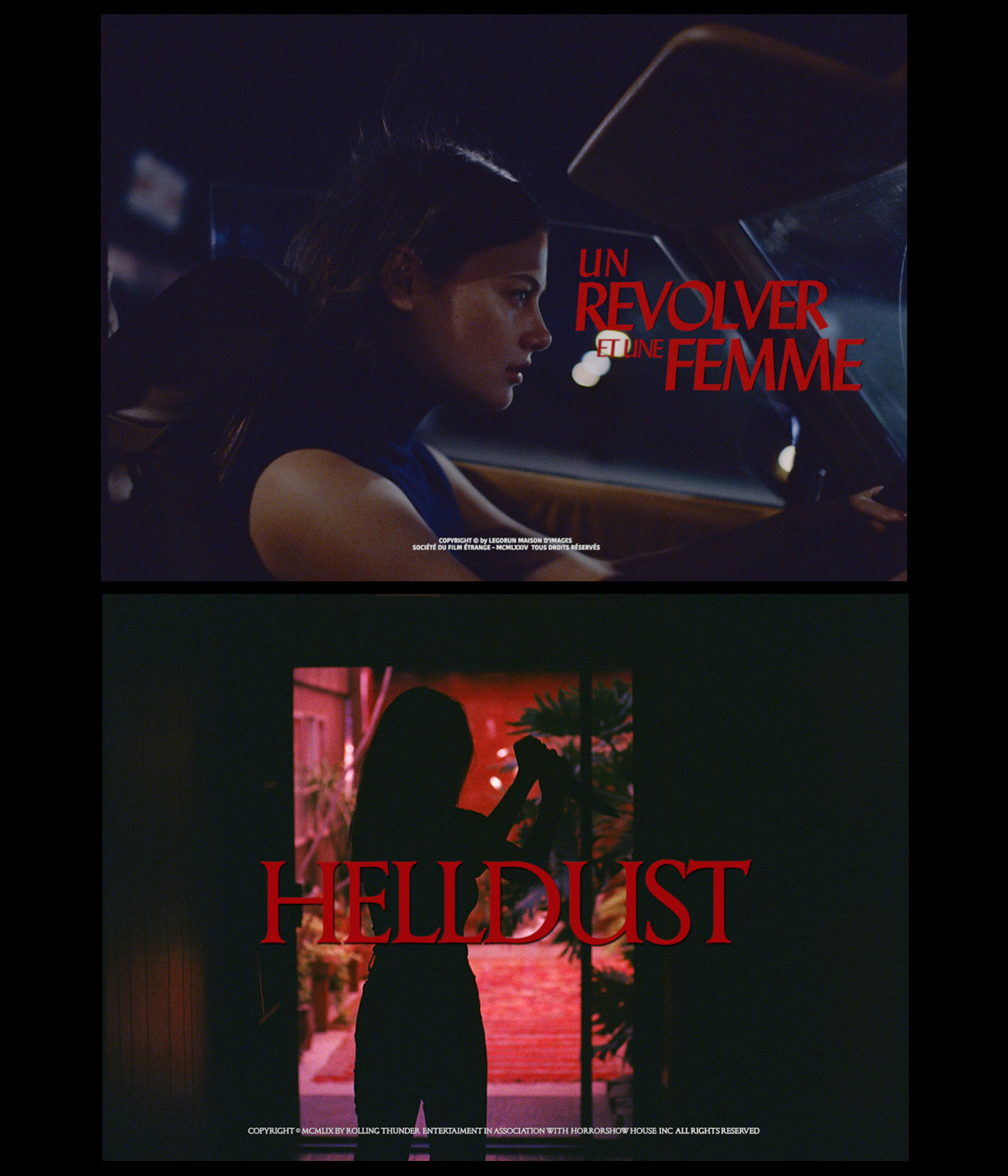
Fictional films created for the Joywave “Obsession” video
Jeff Hamada: It seems like each of you kind of do everything (on both sides of the lens), and prefer to keep the crew as small as possible, but tell me about your approach to filmmaking.
Dimitri Basil: When we started we couldn’t afford an art director, or stylist or cinematographer — so we decided 1. we can sit and wait for someone to give us the opportunity or 2. just learn to do it all. We went with number two, not by choice but because no one was interested in our projects. Film is a collaborative art form but having the skills to shoot, edit, design, etc. and being an all-round one-woman band is a liberating feeling.
However, working alone can get lonely and boring… If it was up to me, and it was sustainable. I would aim for not being three but six or twelve. We could make some fictional name up and make everyone believe it’s one person doing it all. I sometimes wonder if Leonardo Davinci was a collective of people, all working within the one name — that being “Leo Davinci”. I like saying Leo because it sounds like I know him… like we are friends. Anyways, it’s only a thought…
Cooper Roussel: We must be masochists who like to destroy our bodies and minds in slow-motion and on repeat. I would say hire big crews, enjoy air-conditioned trailers and luxurious breakfast buffets… live long healthy lives.
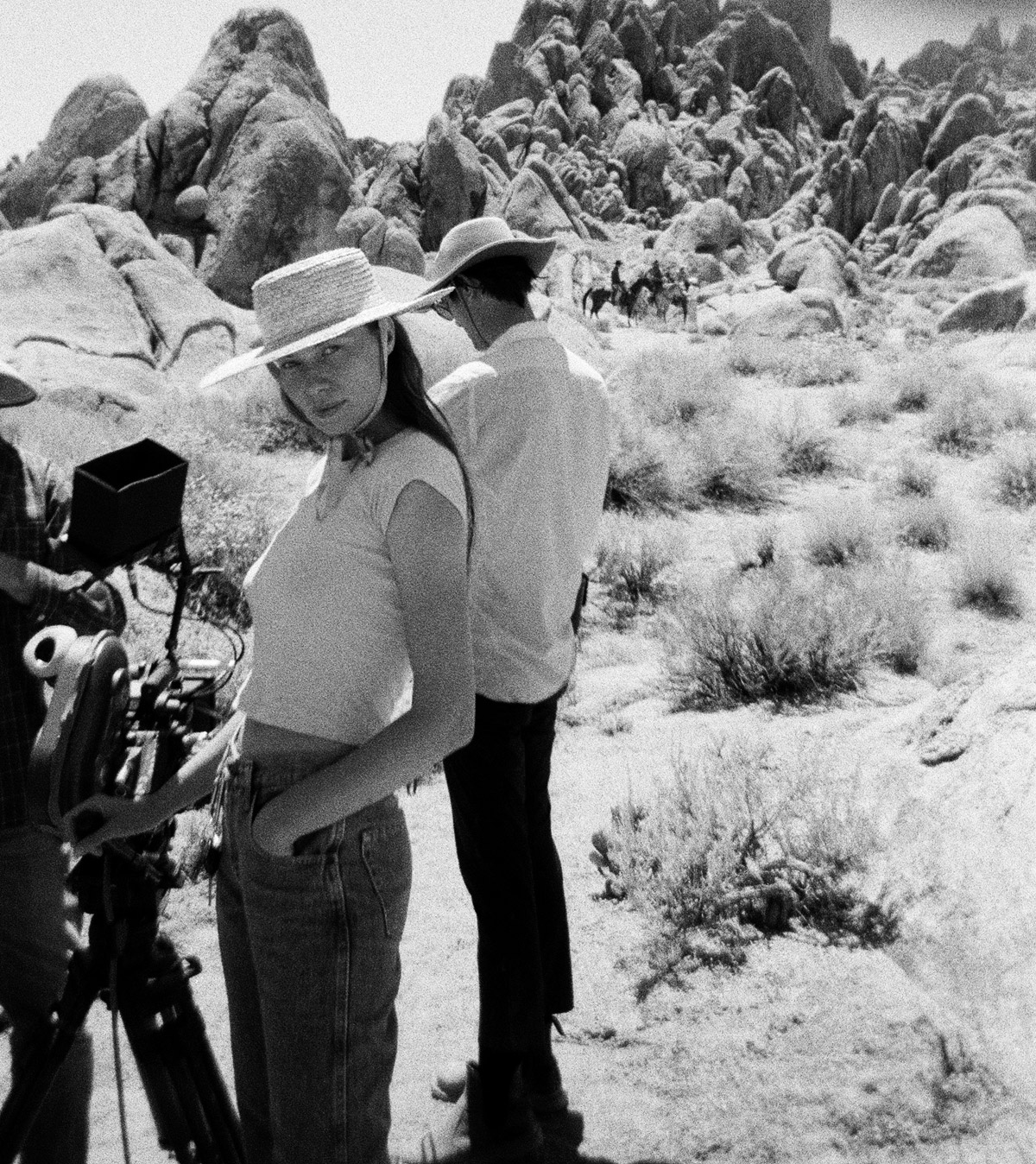
Behind the scenes of the Joywave “Obsession” video
Jeff Hamada: How different were each of you, creatively, before you started collaborating?
Cooper Roussel: Dimitri and Laura had a very strict vetting process when I joined up with them, but I’m really good at cheating. From then on I always make sure I’m the last to share my input so I can just parrot anything they say. I find that the last person to speak always gets the credit. Soon I’ll get all the credit. To be honest, I taught Dimitri and Laura everything you see.
Jeff Hamada: I read somewhere that when you were shooting “Tangerine,” you used sunglasses as an ND filter. Can you share some other outside-the-box DIY solutions you’ve used on videos?
Dimitri Basil: Sort of… Digital cameras’ smallest addressable element is a pixel, pixels are square — no matter how much resolution or grading, you are still dealing with a square… maybe new cameras should make pixels circular… is that possible? But even if that was the case every circular pixel would be identical… and what you want is slight variations for each pixel — maybe that’s what camera developers need to do — circular pixels with slight alterations in shape and size….
I don’t know how I made something so simple, and that most photographers and filmmakers understand, sound so confusing…. Maybe I’m trying to impress you, I’m trying to sound intelligent… I hope it’s working… Anyways, to summarize what I was saying — video is sharp, it looks sharp… and it looks clinical and at times hyperreal… and if that’s the look you are after, then you don’t need to worry… but I happen to dislike hyper-real images, my whole approach to film is to escape reality… Escapism!
So in an attempt to counteract that very sharp realistic, clinical look… I started buying cheap resin and plastic filters and would keep them in my pocket for days… I used to live right by the sea, and a daily swim, or hanging by the beach was routine…. So my pockets always had sand in them… The sand or whatever was in my pocket would gradually scratch the resin filters… each filter had its own original pattern of scratches and each filter was made of different types of resin/plastics… making each filter’s image quality unique…
Anyways, one of those plastic, scratched ND’s is what we used for “Tangerine.” I was really into my resin filters… felt like a winemaker or a coffee roaster that had all these little tricks to make the flavor richer or more subtle… We don’t use them anymore because when you shoot film you don’t need to think of how to deal with pixels… but if we shoot digital and we’re after that low contrast/ 70’s pull-development look, then we’ll be taping cheap resin in front of very expensive lenses.
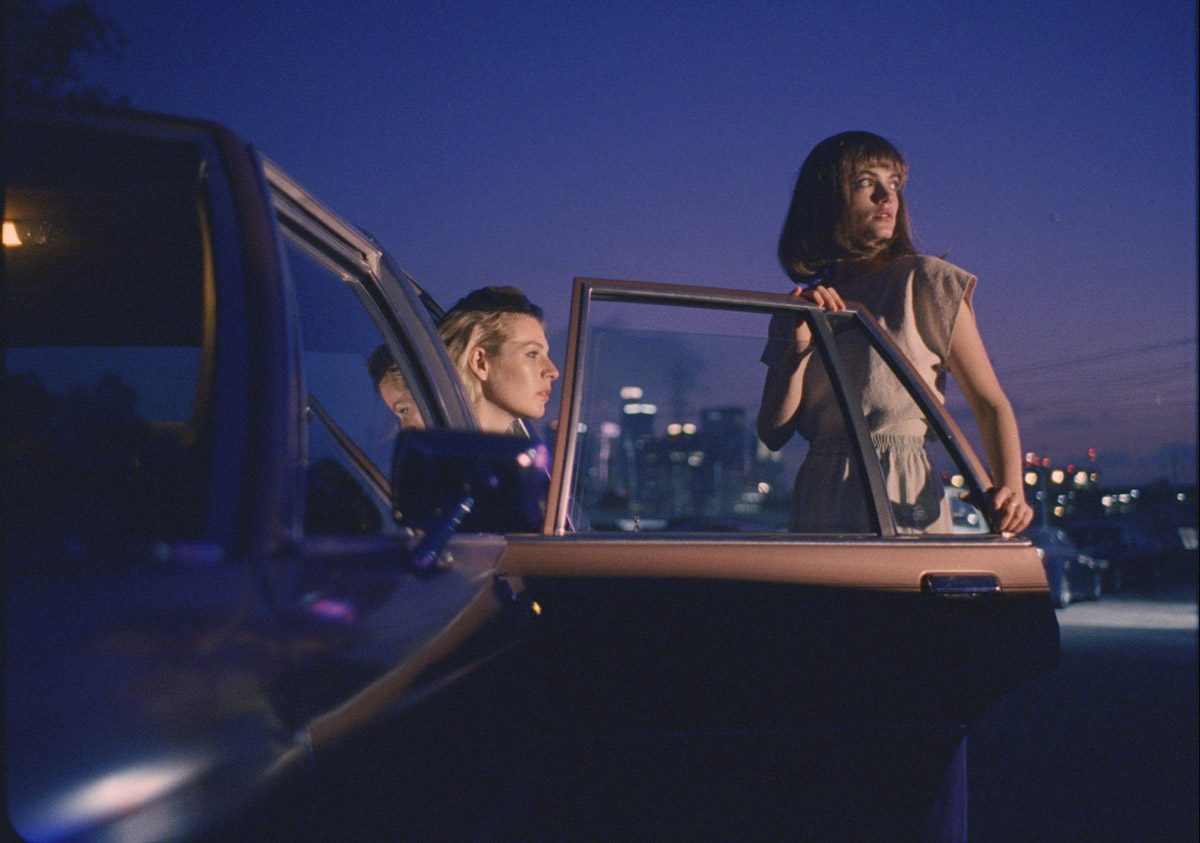
Still from Joywave “Obsession” video
Jeff Hamada: How would you describe your aesthetic?
Laura Gorun: That’s a difficult one to answer…. I sometimes believe having an aesthetic can be limiting for an artist… but today there’s so many films and directors and differentiating yourself seems to be a good way to stand out.
Dimitri Basil: Because we’ve never had the right budget for a personal project — I feel like we haven’t reached that point where we can define our aesthetic… but I hope if in the future we reached that point, and someone will summarize our aesthetic like this… Positive – The confused child of Antonioni and Seiun Suzuki. Negative – An immature, arrogant, pretentious and badly executed mish-mash of 1970’s auteurs films.
Joywave “Obsession” (director’s cut) by Laura Gorun, Cooper Roussel & Dimitri Basil
Jeff Hamada: Let’s talk about your video for Joywave, how did the concept for “Obsession” come together? It felt like a direct descendent of the Flight Facilities video.
Laura Gorun: We’ve had a few feature films fall through… Maybe subconsciously we were trying to make up for not shooting a feature yet… Also, in my opinion, I feel like most artwork for movie title sequences and font design has become lazy. Even important masterworks have terrible title sequences… It feels like an art form that was mastered in the past and is now just computer-generated without much thought or love put into it… I’m not saying all contemporary films are guilty, but the vast majority feel rushed right from the get-go — that being the title sequence.
Jeff Hamada: What were some of the biggest challenges of making it? I’m sure there were many.
Dimitri Basil: We are so used to shooting in multiple locations with full ensemble casts that the actual shooting process was easy and very fun… Shooting with no permits being perhaps our main specialty, the rush of getting shut down forces you to make fast decisions… the actors, crew, everyone’s in on it… so the collective focus is at its peak! All good practice. I highly recommend it. The hardest part came in post — creating multiple titles that felt real was overwhelming. We were lucky that art directors/designers Dora Forero and Dominique Basil managed to create so many great titles in a week and a half.
Cooper Roussel: One of the biggest challenges was stopping. At one point we were just hitting up ATMs, haggling with seaplane captains and trying to set up a water shoot with 30 minutes of light left. We wanted as many fictional movies as possible and we squeezed that modest budget lifeless.
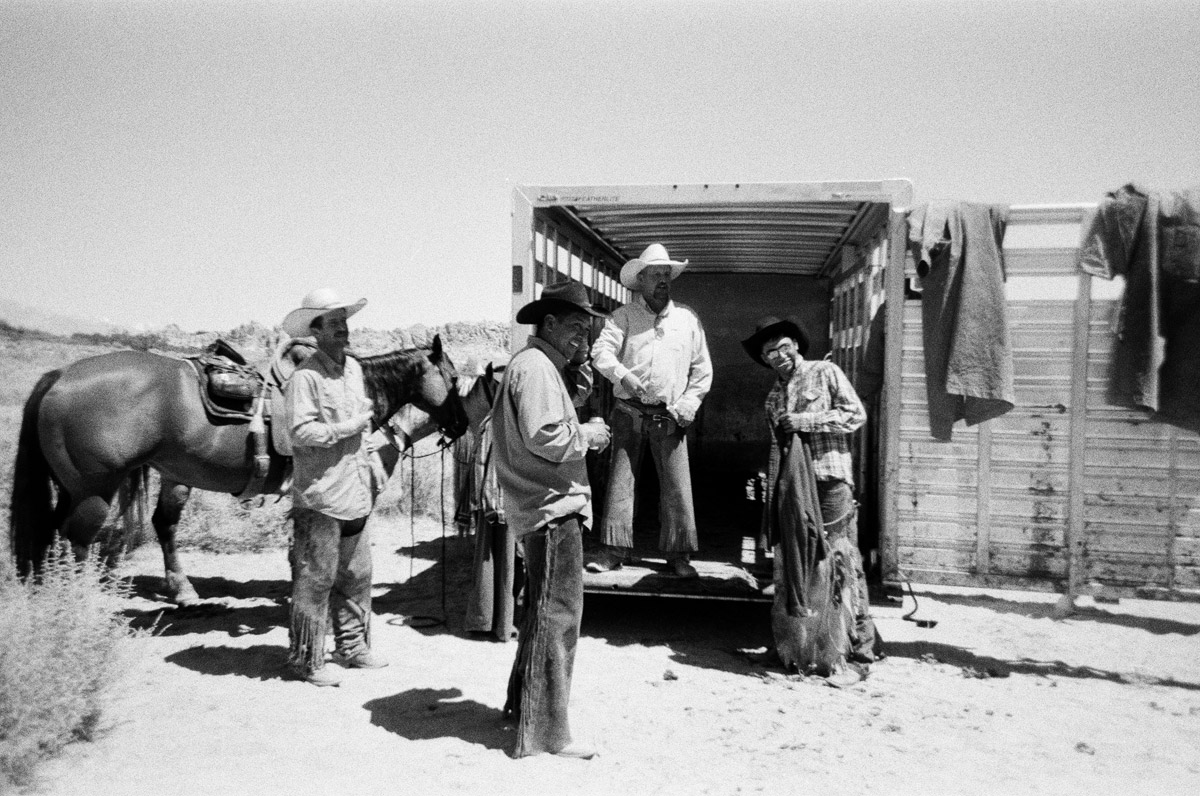
Behind the scenes of the Joywave “Obsession” video
Jeff Hamada: Can you talk a bit about the differences between the director’s cut and the version that was first released? When we saw this cut we couldn’t help but think, what if this version never saw the light of day! It’s a far superior edit and we meant it when we called it a masterpiece.
Dimitri Basil: Masterpiece coming from you! Feels very rewarding… When we read the comment in Vimeo, we printed it and taped it everywhere.

Laura Gorun: Joywave are great. They’re a very smart band and they’re willing to try anything. They’re all in for being self-referential, confusing, surprising, not self-serious (which is becoming rare) — and their fans love it. The difference in cuts mainly has to do with time and deadlines, Joywave had to release the video by August and we needed more time to get the graphics right… but their PR team and release timeline couldn’t wait any longer. They just said give us the best you can now, and do a director cut when you are ready.
Cooper Roussel: We were close to grabbing the hard drives and going incognito.
Jeff Hamada: What’s one thing that filmmaking has taught you about yourselves?
Cooper Roussel: We’re radioactive cockroaches that refuse to die or go away no matter how many times we get squashed.
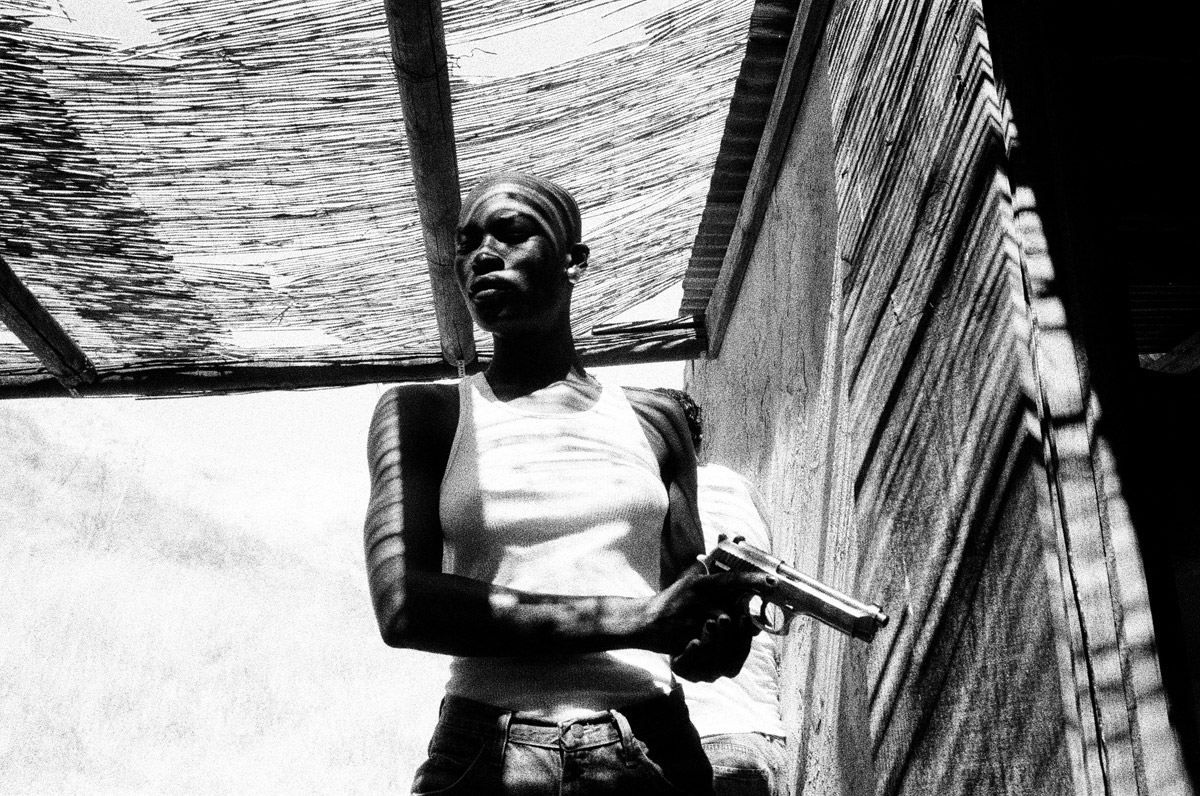
Behind the scenes of the Joywave “Obsession” video
Jeff Hamada: Who are some other filmmakers inspiring you these days?
Dimitri Basil: Speaking of newer contemporary filmmakers – Yorgos Lathimos and Robbert Eggers. In the music video/short film field I’m excited to see the future films of Ian Pons Jewell, Hiro Murai , Francisca Alegria and Sam Kristofski.
Cooper: Hiro Murai, Ian Pons Jewell and Quinn Wilson are creative geniuses that are consistently pushing the boundaries in both the commercial and narrative world. In feature filmmaking, I’m a big fan of Yorgos Lanthimos’ stylized approach to story/dialogue, Robbert Eggers’ attention to detail, and Jonathan Glazer’s all-around suffering to make original art.
Laura Gorun: Lately I’ve been watching Jonathan Glazer, Emir Kulturista, Claire Denis…
Jeff Hamada: What’s one thing each of you would like to accomplish this year? Doesn’t have to be related to film.
Laura Gorun: Our first feature film has been paused because of the current situation — so we are aiming to shoot a simple feature film in the next few months with whatever means possible, almost like an experiment.
Jeff Hamada: What about in your lifetime?
Laura, Dimitri, Cooper: Save the Dolphins.



 Share
Share
 Tweet
Tweet
 Email
Email
